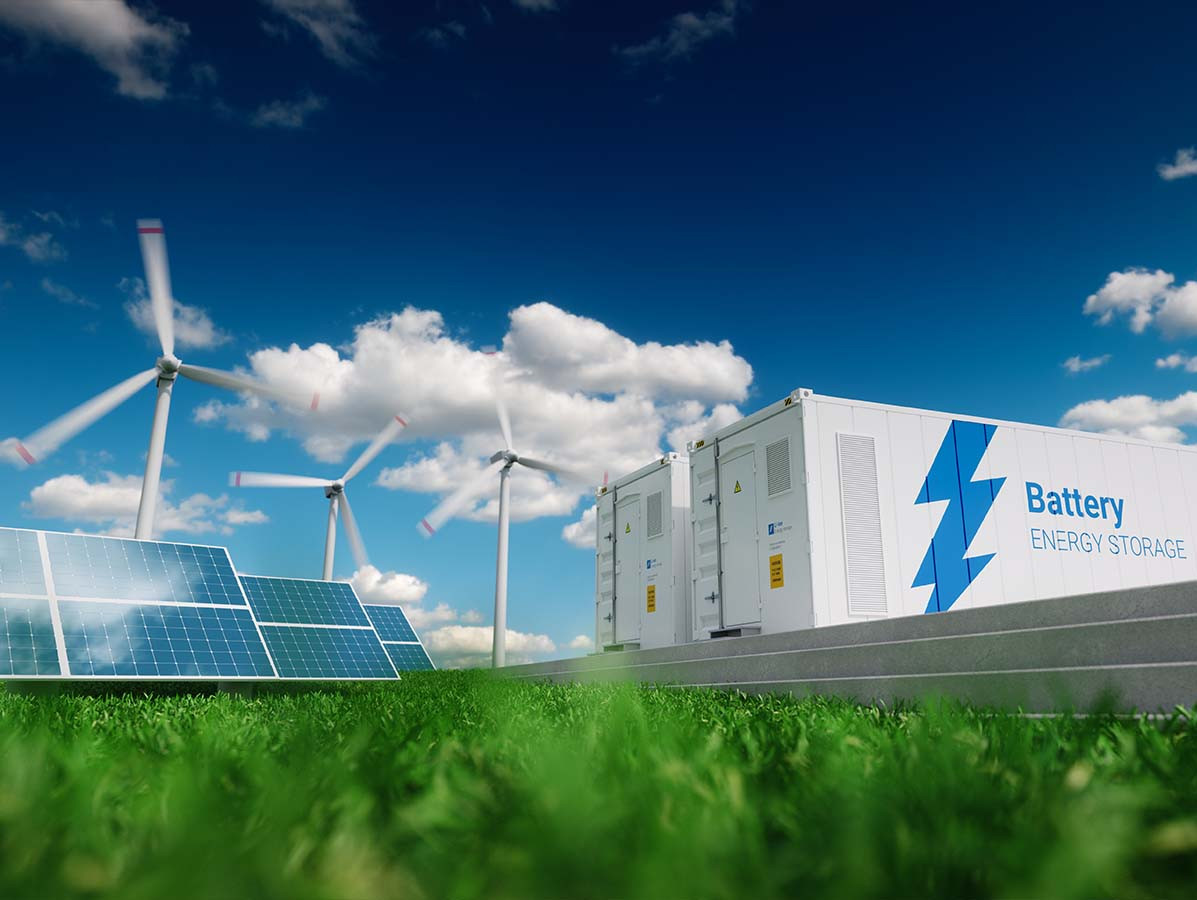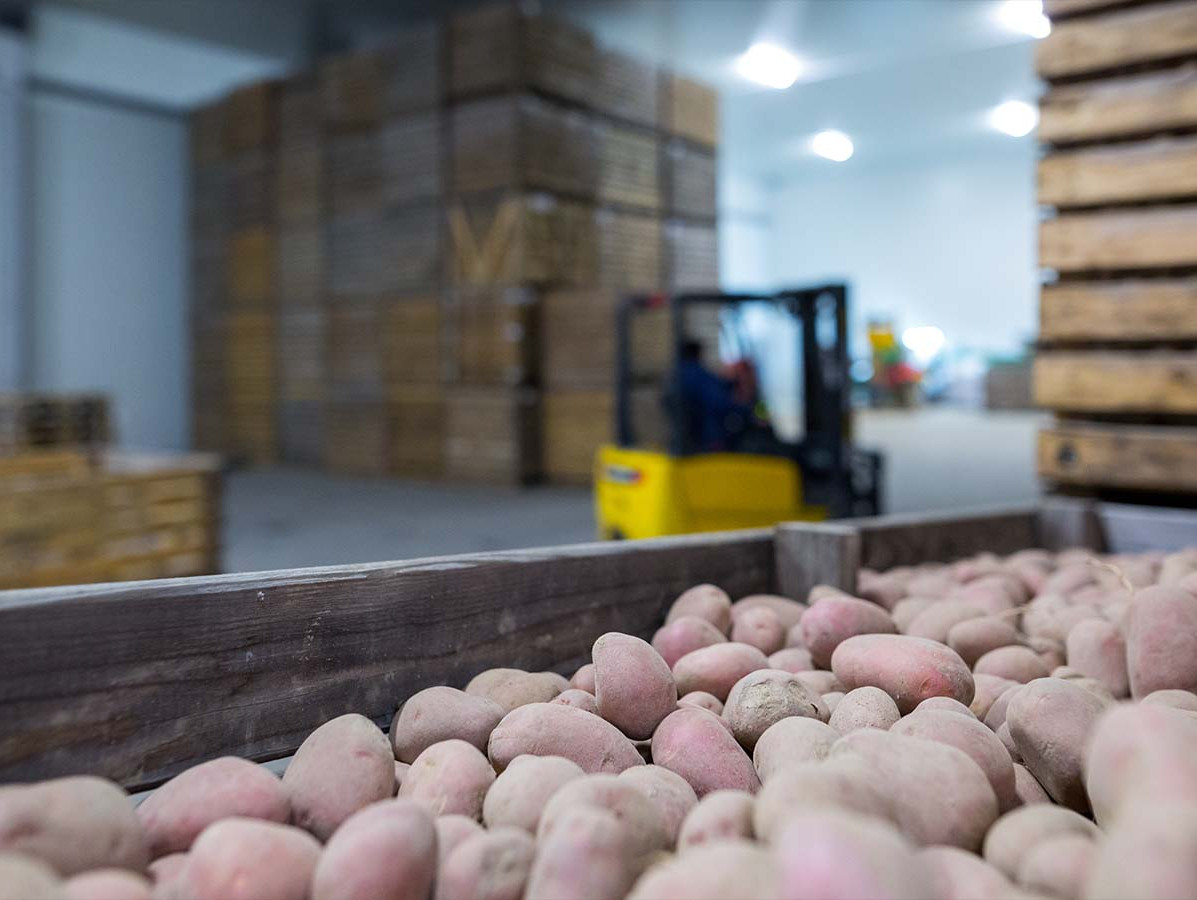
In the pursuit of both sustainability and cost efficiency in the energy transition, storage appears to be the perfect match. This solution is often mentioned in conjunction with renewable energy sources such as solar and wind energy. But how can this be applied to the cold storage sector?
Battery technologies are seen as the catalyst that can accelerate the transition to a more sustainable future. It is not often that all electricity generated by one's own solar panels is immediately fully consumed. Therefore, it is useful to store the surplus so it can be used later when more electricity is needed.
The Dutch electricity market operates through the EPEX Spot market for day and intraday trading. Here, electricity is traded for both the next and the same day. If there is a lot of wind and solar energy available, this results in a lower price in the energy market. Additionally, there is the so-called ‘imbalance market’, managed by the Dutch grid operator TenneT. They correct real-time deviations between the forecasted and actual electricity production, and the forecasted and actual consumption. Producers and consumers are rewarded or penalized based on their contribution to the network's balance. In the past, gas and electricity plants played the role of adding or removing electricity from the grid. With the advent of sustainable electricity, fluctuations have become greater. Solar park owners (producers) respond by shutting down a solar park when there is an abundance of electricity; they then receive compensation on the imbalance market for the non-produced electricity. The opposite also occurs: utilizing storage capacity and receiving compensation for the extra electricity consumed. This system contributes to a stable and reliable electricity supply.
An electricity trading contract allows the purchase of electricity at favorable times on the EPEX and the imbalance market. By purchasing green energy during times of abundance, buying electricity with a trading contract becomes both cost-efficient and sustainable.
It is important to find the right balance between the cooling capacity needed for the refrigeration or freezing cell and the price of electricity. The so-called ‘controllable capacity’ for refrigeration and freezing cells is the electrical capacity of the compressors. A control system aimed at the most favorable electricity consumption on the various markets contributes to a significant reduction in electricity costs.
Ensuring the quality of the food stored in refrigeration and freezing cells is, of course, the highest priority. The key to success lies in the precise alignment of the capacity of the refrigeration or freezing cell with the available electricity without compromising the quality and safety of the stored food. This requires advanced technologies and a good understanding of both the energy market and the operational requirements of the food industry.

The extent of achievable electricity cost reduction depends on the type of product and the temperature needed to preserve it properly. For freezing meat, a temperature of at least -18°C is required to ensure it can be stored for a long time. For cooling and storing potatoes, the range is between 0.3 and 5°C to guarantee good quality. When prices are favorable, more energy can be invested in freezing meat than in cooling potatoes. The refrigeration cell can also be turned off for longer periods when prices are high, without exceeding -18°C. There are various operational parameters that play a role in the achievable reduction, such as opening the door of the freezing cell. For cooling potatoes, this reduction can reach 10-20%; for freezing cells for meat, it is a multiple of this.
This all sounds quite complicated, but there is a tool: the Advanced Energy Management System (AEMS) box. This is a control box that communicates with, for example, the cooling computer to turn on or off the cooling capacity or the battery management system of a battery. It stores electricity in a refrigeration-freezing cell, battery, or heat storage when there is a surplus (for example, from solar energy generated by solar panels on your roof) or when there is an excess on the market. Owners of refrigeration and freezing cells benefit from lower and even negative electricity prices during times of abundant sustainable energy. The fact that you can get more favorable prices on the energy market (for example, through the imbalance market) also shortens the payback period of the investment in a battery or solar panels. The AEMS box is an innovative control system that fully automates the supply and demand on the various electricity markets for an individual electricity connection. It integrates well with existing storage options and control systems. This not only makes companies more environmentally friendly by optimizing the use of green energy but also more profitable: operational costs are reduced.
Source: Vakblad Voedingsindustrie 2024